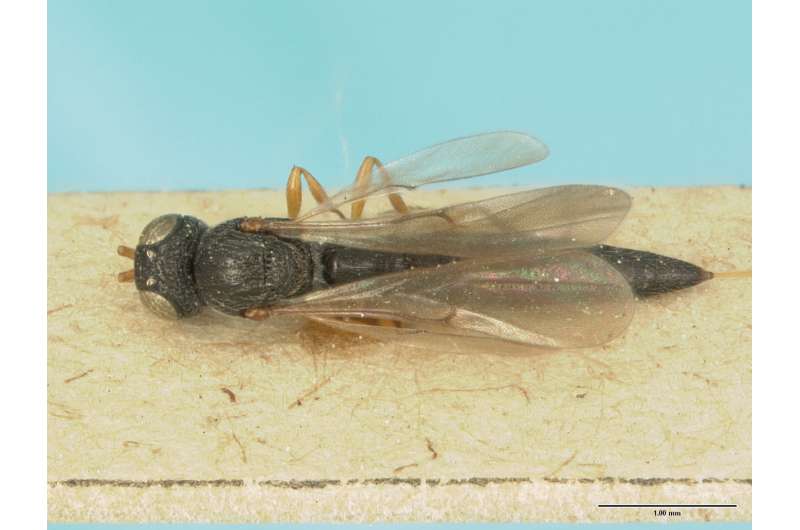One species described multiple times: How taxonomists contribute to biodiversity discovery

While working on a rare little known group of Oriental wasps that most likely parasitise the eggs of grasshoppers, locusts or crickets, not only did a team of four entomologists discover four previously unknown species, but they also found that another four species within the same genus (Habroteleia) were in fact all one and the same - a fifth species discovered more than a century ago.
Their study, published in the open access journal Zookeys, comes as a fine example illustrating the important role played by taxonomists in puzzling out the Earth's biodiversity.
The research was conducted by doctorate candidate Huayan Chen and Dr. Norman F. Johnson, both affiliated with The Ohio State University, USA, Dr. Elijah J. Talamas, Florida Department of Agriculture and Consumer Services, USA, and Dr. Lubomír Masner, Agriculture and Agri-Food Canada.
Prior to their study, there were only nine species known in the genus that had been described over the last 113 years from India, Japan and the Philippines.
However, following careful analyses, most of those species turned out to be synonyms of another one discovered in distant 1905, H. flavipes. Because of this species having been described and named five times in total through the years, the richness of the genus has been greatly inflated.
In their turn, having identified four new species belonging to the same genus after studying additional material collected from Madagascar, Papua New Guinea, and the Fijian archipelago, the scientists have maintained the species number in the group intact.
Additionally, the team provides a detailed illustrated identification key to all members of the genus in their paper. This list of characteristic features is set to prevent similar taxonomic confusion in the future.
In conclusion, Chen and colleagues have significantly advanced our understanding of the diversity and biogeography of the rare parasitoids, amongst which there might be some that will eventually prove to be helpful in pest management.
"Taxonomic revisions are essential for the fundamental understanding of biodiversity and its conservation. Taxonomists play a critical role in this process," explains the lead author.
More information: Hua-yan Chen et al, Revision of the world species of the genus Habroteleia Kieffer (Hymenoptera, Platygastridae, Scelioninae), ZooKeys (2018). DOI: 10.3897/zookeys.730.21846
Journal information: ZooKeys
Provided by Pensoft Publishers





















